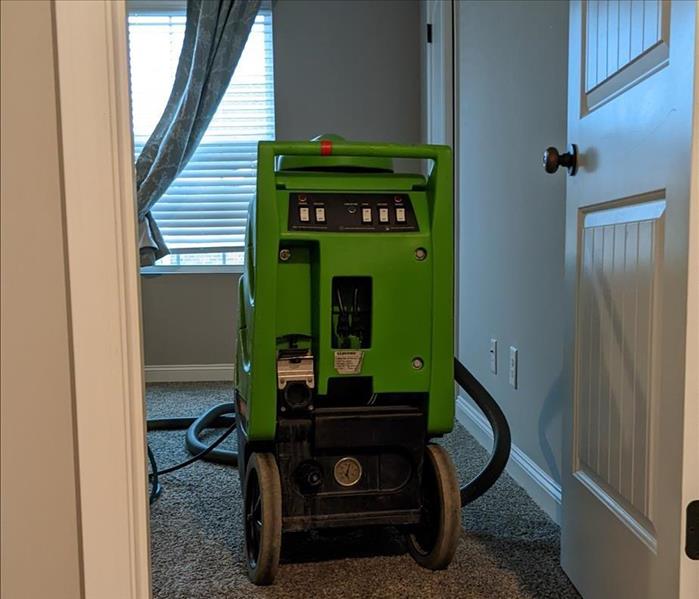The importance of proper ventilation during restoration
8/14/2024 (Permalink)
When it comes to restoration projects, whether you're dealing with water damage, fire damage, or mold remediation, one crucial factor often overlooked is proper ventilation. At SERVPRO®, we understand that effective ventilation is not just a good practice—it’s an essential component for successful restoration. Let's delve into why proper ventilation is vital and how it can make a significant difference in your restoration efforts.
Preventing Secondary Damage
One of the primary reasons for ensuring proper ventilation during restoration is to prevent secondary damage. Water damage, for instance, can lead to high humidity levels in the affected area. Without adequate ventilation, this moisture can spread to other parts of the property, causing further damage such as mold growth, warped wood, and deteriorated drywall. By incorporating effective ventilation systems, we can control humidity levels and confine the damage to the initially affected area, making the restoration process more manageable and less costly.
Enhancing Drying Efficiency
When dealing with water damage, time is of the essence. The longer water sits, the more damage it can cause. Proper ventilation plays a crucial role in speeding up the drying process. By using high-powered fans, dehumidifiers, and air movers, we can increase airflow and reduce drying times. This not only minimizes damage but also helps to restore your property to its pre-damage condition more quickly. Efficient drying also means reducing the risk of mold growth, which thrives in moist environments.
Improving Air Quality
During restoration, especially after fire damage, the air quality can be severely compromised due to smoke, soot, and other airborne contaminants. Proper ventilation helps to clear out these harmful particles, improving the overall air quality in the affected area. This is achieved by using air scrubbers, which filter the air and remove particulates, and by ensuring a continuous exchange of indoor and outdoor air. Better air quality means a safer and more comfortable environment for everyone involved in the restoration process.
Controlling Odors
Odors can be a persistent issue after fire and water damage. Smoke, mold, and mildew can leave behind strong, unpleasant smells that are difficult to eliminate. Ventilation is key to managing these odors. By ventilating the affected area properly, we can disperse these smells more effectively and use advanced deodorization techniques to neutralize them. This is especially important in residential properties, where lingering odors can affect the comfort and well-being of the occupants.
Ensuring Safety
Safety is always a top priority in any restoration project. Proper ventilation helps to remove hazardous fumes and chemicals that might be used during the cleaning and restoration process. This reduces the risk of inhalation hazards for our technicians and the property's occupants. Additionally, adequate ventilation helps to keep the environment stable, reducing the risk of accidents caused by slippery surfaces or compromised structural integrity.
At SERVPRO, we prioritize proper ventilation in all our restoration projects. Whether it's water damage, fire damage, or mold remediation, our team is equipped with the latest technology and expertise to ensure your property is restored efficiently and effectively. Remember, when disaster strikes, proper ventilation can make all the difference in the world. If you need restoration services, don't hesitate to contact SERVPRO—we're here for you 24/7.

 24/7 Emergency Service
24/7 Emergency Service
